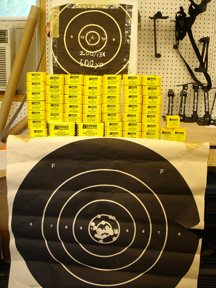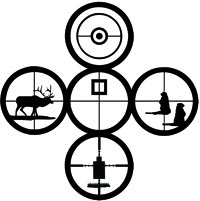If you are a discerning rifle shooter, this is information you need to know (if you don’t know it already). It is time to cut through the marketing confusion and talk about the truth when it comes to bullet performance. Every brand of bullets (and components, but for this article I am going to focus on bullets) boasts about being capable of achieving top performance. Nearly every brand can quickly produce a report of a competition that was won or a great hunting shot that was made with their product.
So how is it possible for all brands to claim that they produce “TOP” performance over others? Certainly, one brand or bullet in a given class has to be the top performer, leaving all the others as secondary or lesser performing, right? Are most brands who claim top performance lying since only one can be the truly top overall performer? The honest answer to that question is no, they are not lying. The truth is that no bullet or brand will ever hold the distinction of being the true top performer above all others (as a brand or consistently as a given bullet for all rifles).
How can this be?!?
The answer is simple and, frankly, well-known by those most knowledgeable in the firearms industry. It is the reason why all (or certainly most) brands can claim success on a level that could qualify them as THE top performer. The truth is that each and every rifle is capable of optimal precision performance with any brand due to one key relationship. It is the relationship or “fit” between the bullet’s bearing surface dimensions and the barrel’s internal dimensions.
Let me explain what I mean by “fit”. For example, all 6mm bullets will “fit” into 6mm cases and 6mm barrels (or at least they should). This means that you can use 6mm bullets in any 6mm cases and the appropriate twist 6mm barrel. So they dimensionally are capable of going together and producing holes in targets. The “fit” I am talking about has to do with how these dimensions influence the rifle’s harmonics or tune.
To extend the example, certain 6mm bullets will fit a barrel with ever-so-slight differences that make it better for the overall tune (or performance) of the rifle. A top shooter and gunsmith for whom I have a tremendous amount of respect, put it perfectly when he described a good bullet/barrel fit or tune in this way; “When you find the right bullet, it’s kinda like your first wife, before you got married. Pure bliss.” Before you ladies get too fired up, just remove the word “wife” in the last sentence. Insert the word “husband,” and you’ll agree that this statement’s meaning is accurate.
The “fit” I am referring to is more influential on how a rifle will perform than any other load characteristic (under normal circumstances). This means that the quickest way to tune your rifle is not to change your powder charge or seating depth, but rather, to change bullets. Start with one known safe load and one specific COAL that is either touching the lands or jumping the bullet to the lands the same amount each time, and then start changing bullets. (Keep in mind; you will have to adjust your COAL seating depth to get each bullet to the same jam or jump) In a few three-shot groups with different bullets, you will quickly know which one will perform the best in your rifle.
NOTE: It is very important to mention that there are a number of ways to tune a rifle. All of these ways can work very well. The method I am describing is meant to provide one way that is faster in comparison to other tuning methods. This does not make the other ways wrong or less capable.
Also, whether you use a jam or a jump in your testing should depend on whether you normally shoot with a jam or a jump. Jams can produce more consistent performance (not always and especially not with VLD bullets), but hunters should jump their bullets and use tight neck tension due to important reasons related to ammo being used in the field and fed through magazines. The key is whether you typically use a jam or a jump, you should use the same jam or jump when testing different bullets.
Once you have found the bullet that shoots best, you can tweak your load to get optimal performance with that bullet. You will find that the optimized load with this bullet will outperform all other optimized loads using other bullets (when it comes to precision in your particular rifle).
There are plenty of reasons why you may choose one given bullet; in which case you can optimize it as well. But if you start by testing different bullets first, you will find the most optimized precision when you find the right bullet/barrel fit for your rifle. (In some situations, you may find more than one bullet produces the best results.)
The information above is all you need to internalize to apply this idea to your shooting so you can see immediate improvements. If you are interested in a Berger point of view on this subject, continue reading.
So every bullet brand and/or type in a given class has the potential to outperform the other brands in the area of precision, due to the given rifle’s bullet/barrel fit. If you review our advertisings and comments on this subject, we have understood this truth for a very long time and have stated as much (in many different ways). So why then do we at Berger bother to make “Match Grade” bullets if another brand or non-Match Grade bullets can outperform our Match Grade bullets in a given rifle?
The answer is simple.
In many rifles, the Berger option is the best performer as it relates to bullet/barrel fit. Not because of anything special we did to achieve this “fit,” but simply because this is how these situations work out. When this is true, the shooter can achieve an even higher level of performance since our bullets not only are the best fit (in a given rifle), but they are also Match Grade, which means they are as dimensionally consistent as is possible.
If you combine the best bullet/barrel fit with the most dimensionally consistent bullets (and in many cases the best BC), you have a combination that is as capable of top performance as any shooting system on the planet. This combination is capable of producing extremely enjoyable shooting experiences.
However, it is important to understand that even though our bullets are Match Grade, this does not mean that they will be the top performer in all rifles. Bullet/barrel fit plays too big a role for the consistency of the bullet (or high BC) to overcome a poor bullet/barrel fit. It is important to note that poor bullet/barrel fit in no way suggests that you have a bad barrel. It just means that the bullet and barrel you are using are not a good fit to each other. This can happen even if both are perfectly produced.
Does this make sense? To say it in a different way, our Match Grade bullet can be out-performed in the area of precision by other brands due to bullet/barrel fit. However, since other brands are not consistently made to the same dimensional tightness as Berger, they will not be capable of achieving the same level of performance as a rifle that has the right bullet/barrel fit and is optimized using a Berger. This is why we make only “Match Grade” bullets.
History has shown that our bullets tend to “fit” many rifles very well and when they do, they will shoot better than any bullets can be shot in a given rifle. Understanding this, does our slogan “Shoot Better, Shoot Berger” make sense now? It is not marketing hype, but rather a statement that describes what performance level you can expect from using Berger bullets.
If you are still interested in more on this subject please continue, but the content gets less sexy and exciting from here.
It is simply a matter of fact that under the extreme conditions the shooting system experiences, there are slight variations that are almost impossible (or at least very difficult) to detect. Most shooters can’t measure bullets to exacting dimensions, and even fewer (if any) have the ability to measure barrels. At this point in time, no one knows precisely which bullet diameter (and taper or straightness) works best with which barrel internal dimensions. Even if they did, metal composition plays a huge role in this relationship as well, so it is a nearly impossible relationship to define, understand and engineer.
It is also true that every time you change a component or lot of the same component, you are introducing a new variable that may or may not affect tune. If the bullet/barrel fit is right, then you can typically overcome load performance issues with simple tweaks to your powder charge or seating depth.
“So what is a shooter to do with this information?” Well, in my mind, the answer is simple. Every rifle shooter who is serious about performance should have many brands of bullets on their loading bench. To achieve peak performance in a given rifle, you should test all or several of the different bullet brands and types within a given class. I can assure you that one or a few will outperform all others (as long as the rifle is sound). This is the bullet that best fits your given rifle. The brand or type is not nearly as important as how this particular bullet fits in your specific rifle. This is a very important concept for discerning rifle shooters to understand.
“But what if I want to use a specific bullet that does not shoot the best in this test, but has other characteristics that I prefer (high BC, bonded core, plastic tip or whatever)?” Well, the answer to this is easy too. Simply tune your rifle as best you can to that given bullet, and accept the best performance that you can get (which may be just fine for your application). Understand that the level of performance you achieve is not a fixed point, but is rather a range that is supposed to enable you to reach your shooting goals.
Rifle shooting is a complex (and thoroughly enjoyable) activity, and there are good reasons why compromises are made in every area – especially if you want to use products that have other performance advantages that generate better accuracy or results (by a measure that matters most to you). At the end of the day, it is all about getting the level of performance you want as quickly as possible so you can have the best shooting experiences.
Eric Stecker



